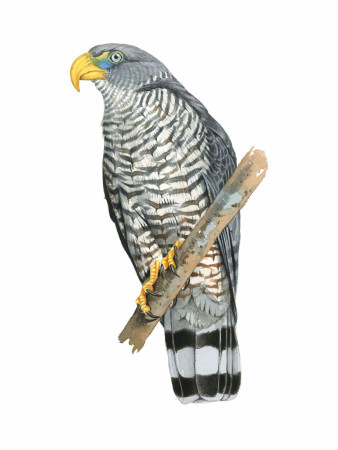We are very excited to welcome several new endemic birds to the Caribbean! Every year the American Ornithological Society publishes their supplement to the Check-list of North American Birds which includes taxonomic (classification) updates to North American bird species. This year, we had not one, not two…. but three different species splits!
Hispaniolan Mango and Puerto Rican Mango
Hispaniola and Puerto Rico each acquired a new endemic with the split of the Antillean Mango. Mangos are large hummingbirds with decurved bills in the genus Anthracothorax. The Hispaniolan Mango (Anthracothorax dominicus) can be differentiated by males having a shimmering green throat, and entirely velvet-black underparts, whereas the Puerto Rican Mango (Anthracothorax aurulentus) has green flanks, black restricted to just a patch on the belly, and overall lighter underparts that are a brownish-gray. The female Hispaniolan Mango has a purplish tail base, whereas the female Puerto Rican Mango has a brownish tail.
In the early 1900s, the two mangos were formerly considered two separate species, but were lumped together (Anthracothorax dominicus) in the 1980s. Recent work looking through museum specimens has found that there are enough plumage and morphometric (size and shape) differences to split these two species once more! We now have the Puerto Rican Mango and the Hispaniolan Mango!
Black-billed Streamertail and Red-billed Streamertail
The Streamertail is a long-tailed hummingbird that is easily recognized as the iconic national bird of Jamaica. The country has gained another endemic with the split of the Streamertail into Black-billed Streamertail (Trochilus scitulus) and Red-billed Streamertail (Trochilus polytmus). The biggest difference between these now two distinct species is all in the name, the bill color. But the Black-billed Streamertail also has shorter wings and a more grass-like green plumage, lacking some of the coppery tones that Red-billed Streamertail has. Like the former Antillean Mango, these two hummingbirds were originally recognized as distinct species, but lumped together into the Streamertail (Trochilus polytmus) in 2010s; now they are split again.
Recent research has studied the hybrid zone (the area where two closely-related species interact and reproduce; their offspring are known as hybrids) between these two taxa, finding it has been relatively stable for the last 70 years. While genetically, the two species remain fairly similar, the hybrid zone is relatively narrow, meaning the two species only come into contact in a small area. It also looks like bill color is important to males that are displaying to females, making a good case for splitting these two charismatic hummingbirds once more. Additionally, the Red-billed Streamertail is widespread across the island while the Black-billed Streamertail is restricted to the eastern part of Jamaica.
Cuban Kite split from Hook-billed Kite

Cuba is also gaining another endemic with the split of the Cuban Kite (Chondrohierax wilsonii) from Hook-billed Kite (Chondrohierax uncinatus). The Cuban Kite was originally recognized as its own species in 1847, when it was first described, but was later lumped into Hook-billed Kite as they can show quite a bit of variation throughout their extensive range in Latin America. However, looking through specimens, the Cuban Kite shows a barred collar, which other Hook-billed Kites lack, overall smaller size, and a larger bill that is typically yellow. While genetically, Cuban Kite remains very similar to Hook-billed Kite, it is a species that is not known to disperse from or travel outside of Cuba, making a good case that there is relatively little connectivity between populations.
Unfortunately, the Cuban Kite is Critically Endangered and there have been very few sightings in recent years. Likely, there is a small stronghold left in the mountains of Eastern Cuba. Their decline has been attributed to habitat loss, loss of its main prey, the beautiful land snails, and persecution from the belief that they hunt domestic chickens. We hope that recognizing the Cuban Kite as its own distinct species will help gain some momentum to conserve this beautiful raptor.
Other taxonomic proposals not accepted
Other proposals that were unfortunately not accepted included: splitting Hispaniolan Elaenia from Greater Antillean Elaenia, recognizing the different subspecies of Red-legged Thrush as 2 or 3 distinct species, and splitting the Caribbean populations of House Wren into 7 distinct species. There’s a lot more work to be done for understanding our endemic birds in the Caribbean!
We are very excited to add a total of 3 new endemic species to the Caribbean! We look forward to continuing to learn more about our specialty Caribbean birds and maybe seeing more distinct species in the future!
Learn more about the Streamertail here (we will update this page soon to reflect the latest taxonomic update): https://www.birdscaribbean.org/2020/04/from-the-nest-day-9/









